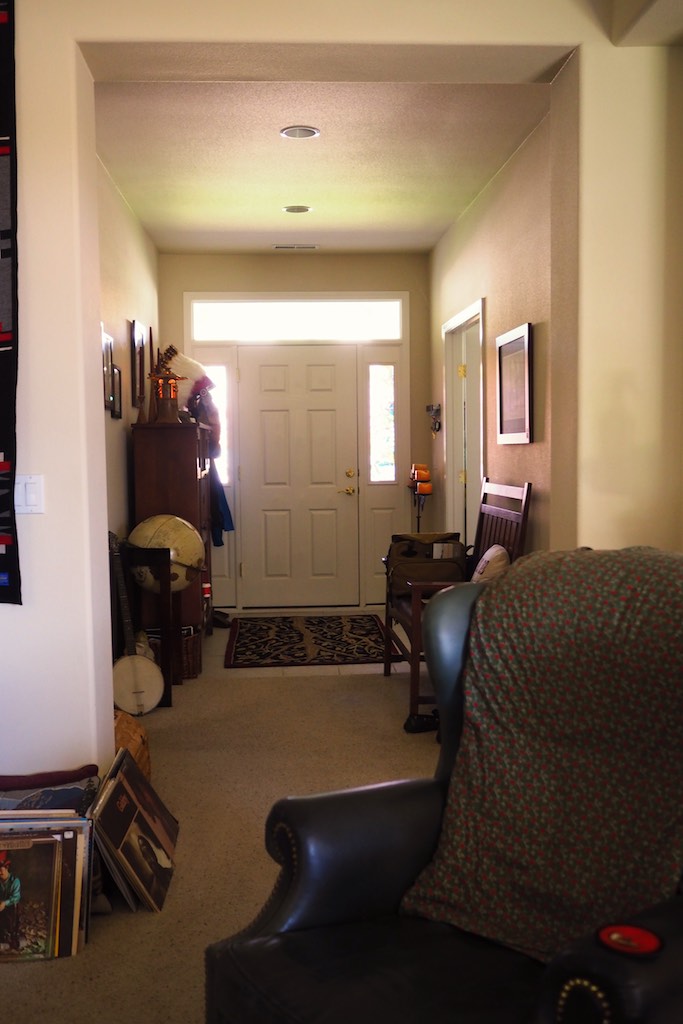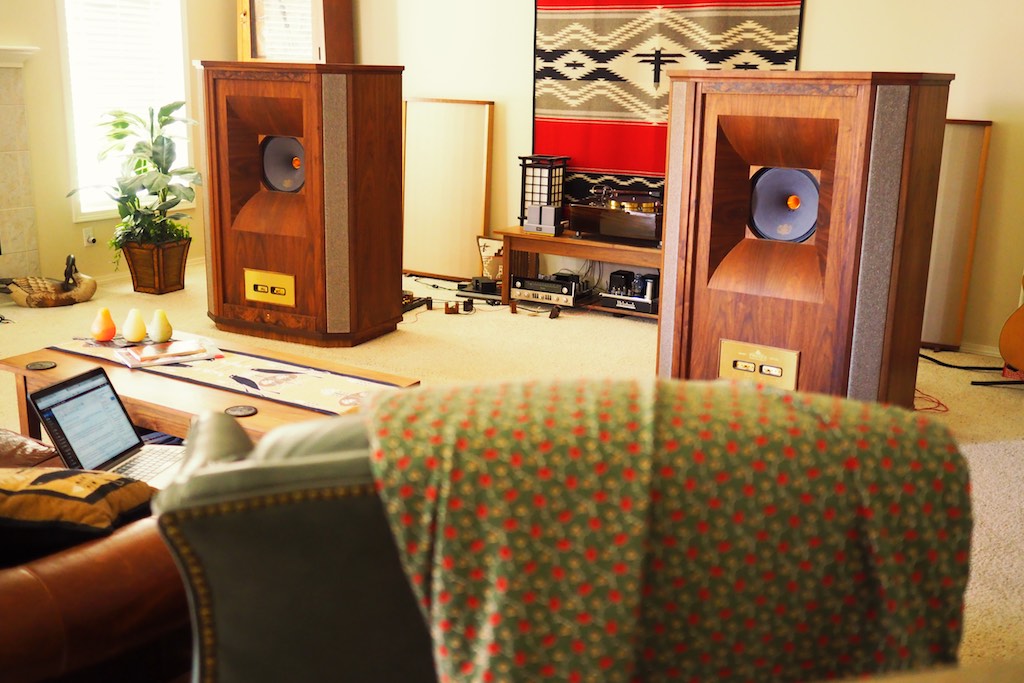Today's essay on the Art of Tone is intended to be both a practical and a thought adventure about what it means to optimize musicality in a high-fidelity music system, as opposed to the usual audiophile emphasis of optimizing the non-musical artifacts of the recording process, like imaging and sound-staging information, for example.
I've realized I made a little bit of a mistake in the way I presented what I was trying to say in In Pursuit of the Art of Tone! Part 2. which caused confusion among my beloved readers about what I was trying to say, which I'm hoping I can patch up here in Part 3.
¸¸.•*¨*•♫♪¸¸.•*¨*•♫♪¸¸.•*¨*•♫♪
Let me first briefly recap Part 1, where I discussed pursuing a style of musicality for your hifi that lights up your heart & mind to transport you into a state of musical bliss during listening.
I also discussed the rather unnatural reductionist approach I use for evaluating musical & sonic performance of hifi gear that comes in for review, and what I listen for in that process so I can tell you something meaningful about its performance, and how that is different from listening to music for pleasure.
Then I discussed common traits in high-fidelity music systems that 'push my pleasure buttons' when listening to music for enjoyment, like being able to play realistically loud, realistically producing timbral textures of instruments & voices, and being able to realistically portray tempo, beat, and rhythm, for example.
¸¸.•*¨*•♫♪¸¸.•*¨*•♫♪¸¸.•*¨*•♫♪
In Part 2 I discussed having fun with your audio adventure by getting the most pleasure you can out of the music you listen to and love.
I mentioned how important (and fun) it is to get out and listen to live music, and how being familiar with what real instruments and music sounds & feels like is an important benchmark for discovering ultimate musicality in your home high-fidelity music system.
I also mentioned how rewarding I've found learning about understanding the fundamentals of music to be, how having a basic understanding of the fundamentals of music is important in understanding the music you are listening to, and it also gives the listener a greater awareness of how well their hifi reproduces those fundamentals of music.
I then mentioned how moving your audio equipment and listening seat around in a room can influence the musicality and sonics of your music listening experience, and I foolishly mentioned the rule of thirds.
¸¸.•*¨*•♫♪¸¸.•*¨*•♫♪¸¸.•*¨*•♫♪
Mentioning the rule of thirds was my mistake that diverted attention away from what I was trying to say about 'the art of tone' and sent the wrong message, which I am now trying to patch up in Part 3.
When I think about the rule of thirds it stimulates me to think more about audiophile-style sonics than it does optimizing musicality, because that's largely how we've been conditioned to respond from reading about audio, and which I believe is largely counterproductive in my own life and listening.
While having a dedicated listening room can be a really nice approach, I’m also a great fan of integrating the music gear into one’s normal living environment, in an effort to make the music a part of the moment-by-moment fabric of our lives rather than just as a dedicated focused listening experience.
It's not a bad thing to setup a solo room like that, but I think it’s important to realize that’s not the only way to do things to get intense musicality.
When I mentioned the positioning of equipment and listening seats within rooms, it was mostly to get across the idea that moving speakers and listening seats around changes the musicality and sonics of what you hear, but those ‘rule of x/y’ voicing strategies are traditionally used to dial in audiophile-style sonics to the greatest extent possible, rather than dialing in musicality to the greatest extent possible.
A Practical and Thought Adventure In Musicality
Now I want to drop in on a practical and thought adventure about what it means to optimize musicality in a high-fidelity music system.
A lot of people have had the experience of hearing music from a distance and recognizing it as live music, and sometimes we are fooled when what we thought was live music turns out to be recorded music.
This is what happened to Yazaki-san when hearing a pair of Altec’s playing jazz in a Tokyo jazz cafe from the street-side as a young college student. As Yazaki-san followed the sound inside to the jazz cafe he found out to his surprise that it was recorded music playing instead of live music, and that experience was partly responsible for his life-long adventure in ‘real sound’ in high-fidelity home music systems.
What magic trick is working when we mistake recorded music for live music from a distance, or another room?
Jim Smith’s stealth comment about that important triad of tone, dynamics, and presence is a peek behind that hugely important curtain of setting up a system for maximum musicality and emotional connection to the music.
An 'Out of Room Experience' Setup Strategy
Let me use a somewhat extreme 'setup' example, that I’ll refer to as ‘an out of room experience’ setup strategy, which is a play on words on an ‘out of body experience’.
At the moment I’m listening to my Altec A7 Voice of The Theatre loudspeakers and SPEC RSA-M3 EX amp (above) using a very non-traditional room setup strategy, called ‘an out of room experience’ setup strategy, where my listening seat is in another room, my living room (below), and the A7’s and SPEC amp are in a small office/bedroom you see down the hall to the right.
In the photo above you can see the green recliner listening position I'm referring to in my living room, and down the hall you can see a doorway to the right where my Altec A7's live.
In the photo below you can see the view from the green recliner in my living room, my Westminster based music system.
In this listening position there is no visuospatial listening information like imaging, soundstage, or the like, from the Altec A7's in the room down the hall, and yet you could be forgiven, if like Yazaki-san, you thought some live music was playing in that other room.
In fact, I’ll go on to say that ‘out of room experience’ setup strategy I’m listening to at the moment provides more musicality and emotional engagement – and sounds more like live music – than many audio systems I have listened to when seated in the same room with them, even though there is no visuospatial listening information present in an 'out of room experience' setup strategy.
The Tone, Dynamics, and Presence of Musicality
Why does that Altec A7 system sound a lot like live music from another room?
Well, as Jim aptly put it, because there’s tone, dynamics, and presence (TDP) in abundance in that system, enough so that it triggers all those ‘live music’ buttons of musicality that make live music so emotionally engaging, and that’s even with a seating position in another room.
So my ‘out of room experience’ setup strategy example is quite literally an ‘out of the box’ (the room) method that provides a remarkably natural and live-like musical experience in spite of it having no visuospatial listening information present when listening from another room, and that is because it emphasizes tone, dynamics, and presence (TDP), which are particularly important from a musicality perspective.
My 'out of room experience' setup strategy example is probably the clearest way to demonstrate the difference between what makes for live-like musicality and how it differs from audiophile-like sonics.
Okay, now with that practical and thought adventure complete, I hope you're with me on the differences between musicality and audiophile-style sonics, and that it's possible to optimize traits that emphasize musicality, just like it's possible to optimize recording artifacts to emphasize audiophile-style sonics.
There are certain traits of live music, that when one becomes aware of them and what they are about, and are able to work those traits of tone, dynamics, and presence (TDP) into any listening environment, whether a ‘good’ dedicated listening room in the traditional audiophile sense, or a ‘terrible’ room, or from a seat in another room, one can achieve a rather remarkable level of live-like musicality that can be very emotionally engrossing.
Interestingly enough, some of the most musically enjoyable systems I have heard over the years have been setup in non-dedicated domestic rooms, so there is reason to be encouraged for both those with dedicated listening rooms, and those without.
So this of course begs the question of "How do you emphasize tone, dynamics, and presence (TDP) in a system to optimize musicality?"
Hopefully, I'll be able to answer at least part of that question, or at least point you in the right direction, in future essays of In Pursuit of the Art of Tone.
As always, thanks for stopping by, and may the tone be with you!

































